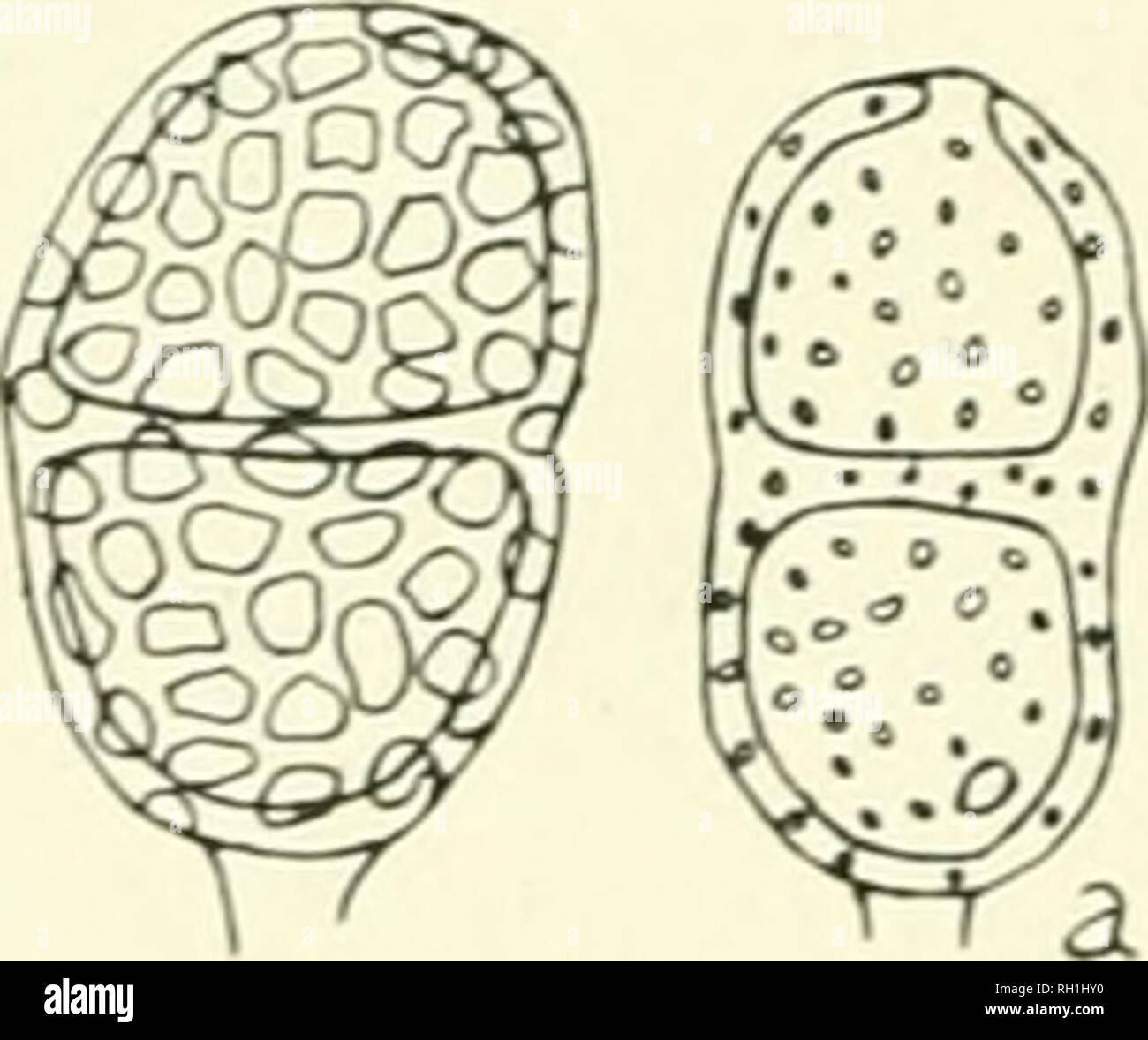. The British rust fungi (Uredinales) their biology and classification. Rust fungi -- Great Britain. ISS PUCCINIA The secidium of P. Conopodii-Bistortae q.v. is sometimes to be found on the same plant as the teleuto-sori of P. tumida, though it is much rarer. Plow-right mentions that, though the Puccini" is very common round King's Lynn, he could never find the secidium which he at that time wrongly supposed to be connected with it. See also Puccinia Bulbocastani. Distribution: France, Germany, Norway. 60. Puccinia Pimpinellae Mart. /Ecidiwm Pimpinellae Kirchn. (1856); Cook40 p.p. Vredo P

Image details
Contributor:
Library Book Collection / Alamy Stock PhotoImage ID:
RH1HY0File size:
7.1 MB (202.8 KB Compressed download)Releases:
Model - no | Property - noDo I need a release?Dimensions:
1727 x 1446 px | 29.2 x 24.5 cm | 11.5 x 9.6 inches | 150dpiMore information:
This image is a public domain image, which means either that copyright has expired in the image or the copyright holder has waived their copyright. Alamy charges you a fee for access to the high resolution copy of the image.
This image could have imperfections as it’s either historical or reportage.
. The British rust fungi (Uredinales) their biology and classification. Rust fungi -- Great Britain. ISS PUCCINIA The secidium of P. Conopodii-Bistortae q.v. is sometimes to be found on the same plant as the teleuto-sori of P. tumida, though it is much rarer. Plow-right mentions that, though the Puccini" is very common round King's Lynn, he could never find the secidium which he at that time wrongly supposed to be connected with it. See also Puccinia Bulbocastani. Distribution: France, Germany, Norway. 60. Puccinia Pimpinellae Mart. /Ecidiwm Pimpinellae Kirchn. (1856); Cook40 p.p. Vredo Pititju', , ' I!, , . Strauss in WCtter, Annal. ii. 102 (1811). Trichobasis Pimpinellae Cooke, Micr. Fung. p. 224. Pucrinln I'iiiiniaellae Mart. Fl. Mosquen. ed. ii. p. 226. Cooke, Micr. Fung. p. 209. Plowr. Ured. p. 155 p.p. Sacc. SylL vii. 616 p.p. Sydow, Monogr. i. 408. Fischer, Ured. Schweiz, p. 127, f. SJ7. Spermogones. Amphigenous, mostly scattered amongst the aecidia, pale-yellowish. ^Ecidiospores. ^Ecidia hypophyllous, in smaller or larger groups, often along the nerves and causing slight hypertrophy, between cup-shaped and pustulate, with a whitish irregularly cut margin; spores verruculose, subhyaline, 20—28/z. Uredospores. Sori hypophyllous, scattered, minute, pul- verulent, cinnamon; spores globose to ellipsoid, echinulate, brown, 22—32 x 20—26 /i, with two (rarely three) germ- pores. Teleidospores. Sori similar, but blackish-brown; spores ellipsoid, rounded Fig. 136. P. Pimpinellae. a^ both ends, not thickened above, hardly Teleutospore, on P. Saxi- constricted, reticulate, brown, 28—37 x fraga (British); a, the same, on P. magna (after 19—2o fi; pedicels hyaline, deciduous, lecher). rather ghort On Pimpinella magna, P. Saxifraga. Xot common. zEcidia, May and June ; teleutospores, July—October. (Fig. 136.) Very similar to P. Ch.aeroph.ylli ; distinguished from it especially by the uredospores, which have for the most part a thicker and darker membrane with on